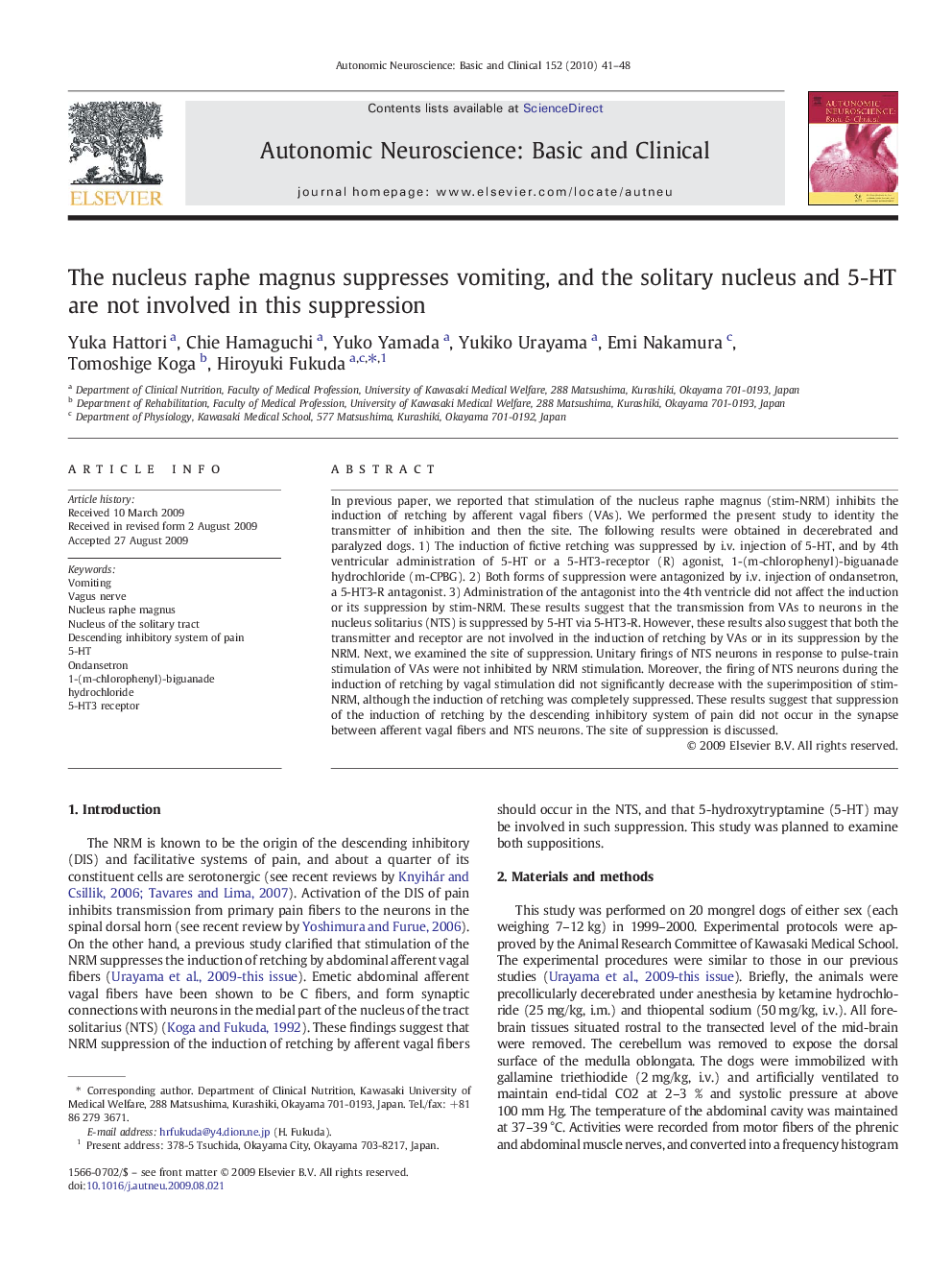| Article ID | Journal | Published Year | Pages | File Type |
|---|---|---|---|---|
| 3035222 | Autonomic Neuroscience | 2010 | 8 Pages |
Abstract
In previous paper, we reported that stimulation of the nucleus raphe magnus (stim-NRM) inhibits the induction of retching by afferent vagal fibers (VAs). We performed the present study to identity the transmitter of inhibition and then the site. The following results were obtained in decerebrated and paralyzed dogs. 1) The induction of fictive retching was suppressed by i.v. injection of 5-HT, and by 4th ventricular administration of 5-HT or a 5-HT3-receptor (R) agonist, 1-(m-chlorophenyl)-biguanade hydrochloride (m-CPBG). 2) Both forms of suppression were antagonized by i.v. injection of ondansetron, a 5-HT3-R antagonist. 3) Administration of the antagonist into the 4th ventricle did not affect the induction or its suppression by stim-NRM. These results suggest that the transmission from VAs to neurons in the nucleus solitarius (NTS) is suppressed by 5-HT via 5-HT3-R. However, these results also suggest that both the transmitter and receptor are not involved in the induction of retching by VAs or in its suppression by the NRM. Next, we examined the site of suppression. Unitary firings of NTS neurons in response to pulse-train stimulation of VAs were not inhibited by NRM stimulation. Moreover, the firing of NTS neurons during the induction of retching by vagal stimulation did not significantly decrease with the superimposition of stim-NRM, although the induction of retching was completely suppressed. These results suggest that suppression of the induction of retching by the descending inhibitory system of pain did not occur in the synapse between afferent vagal fibers and NTS neurons. The site of suppression is discussed.
Keywords
Related Topics
Life Sciences
Neuroscience
Cellular and Molecular Neuroscience
Authors
Yuka Hattori, Chie Hamaguchi, Yuko Yamada, Yukiko Urayama, Emi Nakamura, Tomoshige Koga, Hiroyuki Fukuda,
